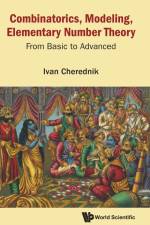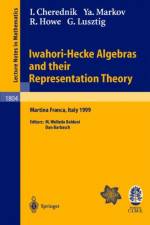av Ivan Cherednik
1 999,-
This book is mostly based on the author's 25 years of teaching combinatorics to two distinct sets of students: first-year students and seniors from all backgrounds, not just limited to only those majoring in mathematics and physics. The prerequisites are kept to a minimum; essentially, only high school algebra is required. The design is to go from zero knowledge to advanced themes and various applications during a semester of three or three and a half months with quite a few topics intended for research projects and additional reading.This unique book features the key themes of classical introductory combinatorics, modeling (mainly linear), and elementary number theory with a constant focus on applications in statistics, physics, biology, economics, and computer science. These applications include dimers, random walks, binomial and Poisson distributions, games of chance (lottery, dice, poker, roulette), pricing options, population growth, tree growth, modeling epidemic spread, invasion ecology, fission reactors, and networks.A lot of material is provided in the form of relatively self-contained problems, about 135, and exercises, about 270, which are almost always with hints and answers. A systematic introduction to number theory (with complete justifications) is a significant part of the book, including finite fields, Pell's equations, continued fractions, quadratic reciprocity, the Frobenius coin problem, Pisano periods, applications to magic and Latin squares and elements of cryptography. The recurrence relations and modeling play a very significant role, including the usage of Bessel functions for motivated readers. The book contains a lot of history of mathematics and recreational mathematics.


